Military History
Contributions made by Roy Parker, Jr., John Aarsen, Bruce Daws and Leisa Greathouse.
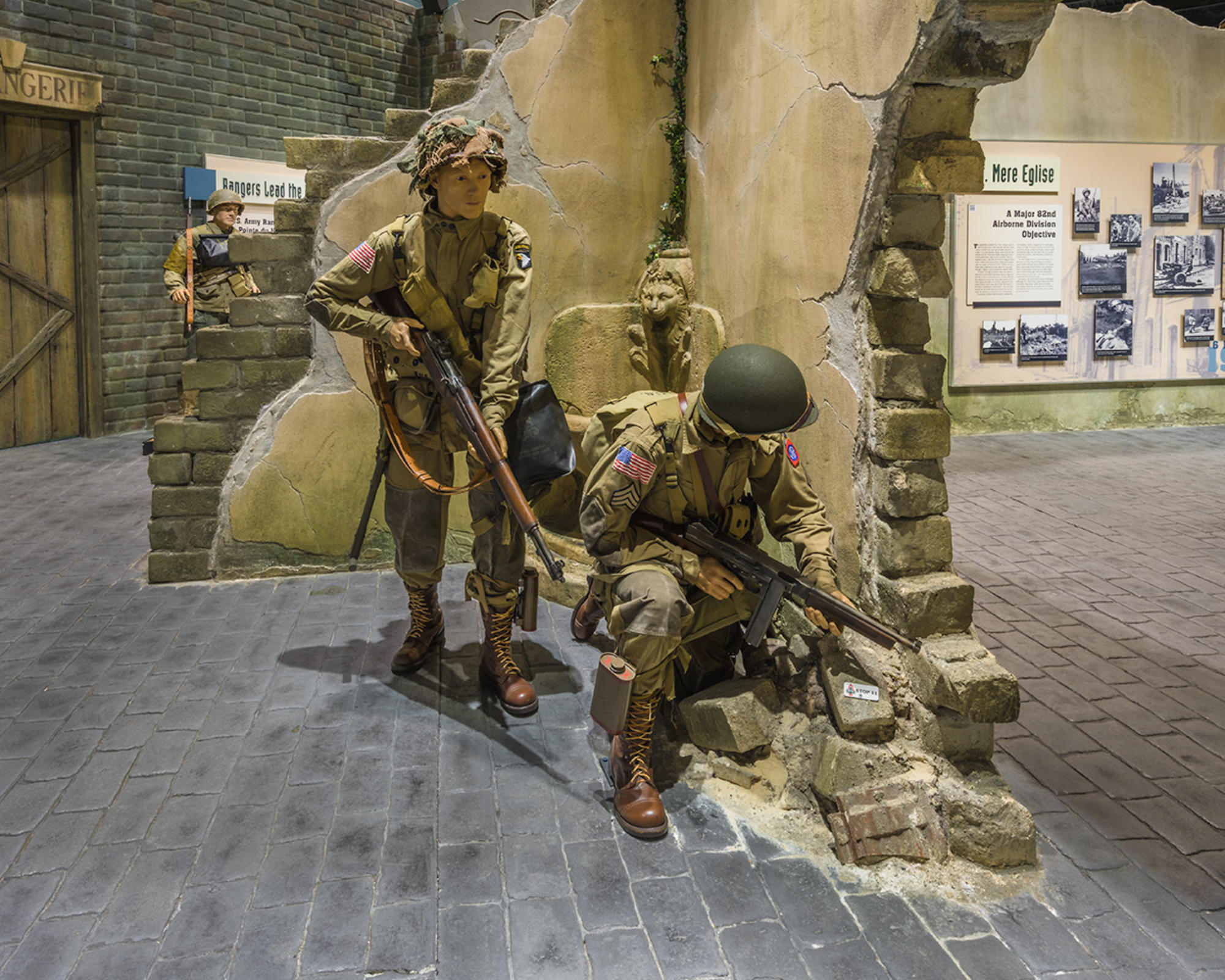
When the federal government chose Fayetteville as the home of one of its new United States arsenals in 1836, that solidified Fayetteville’s relationship with the military. However, Fayetteville can trace its military heritage to the American Revolution.
After the war, when the colonial towns of Cross Creek and Campbelltown merged in 1783, the city named itself for a Revolutionary War hero, the Marquis de Lafayette, the first town in America to do so. Cumberland County was named for Prince William Augustus, Duke of Cumberland. Ironically, the area, filled with Scottish settlers, had met defeat at the hands of “Butcher Cumberland” at the Battle of Culloden in 1746.
In the American Revolution, the village of Cross Creek served as a supply point and rendezvous for soldiers on both sides. In late 1775, Loyalists rallied here before marching to Wilmington and were stopped by Patriots at the Battle of Moore’s Creek Bridge.
The city’s local militia group, the Fayetteville Independent Light Infantry (FILI), first mustered in 1793. FILI members served in the War of 1812, the Mexican War, the Civil War, the Spanish-American War, and World War I. The company has its own museum and memorial park. The FILI is the second-oldest existing volunteer militia company in the country and participates in public events as a color guard.
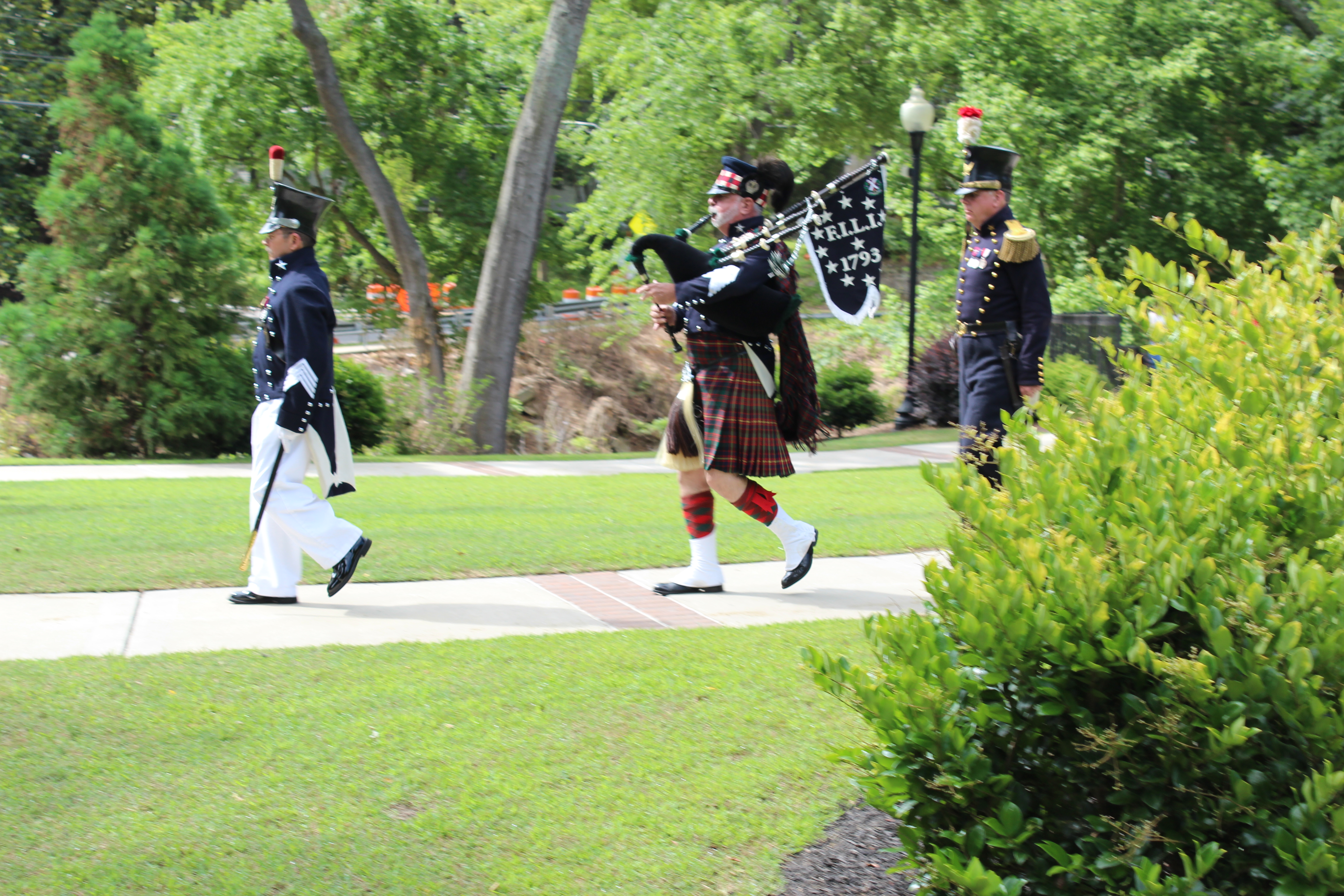
Fayetteville Independent Light Infantry Parade Grounds
Lafayette visited his namesake town in 1825. Local history purports that Lafayette was reunited with one of his bodyguards, Isham Blake, who was living in Fayetteville at the time. Like Lafayette, Blake was at Yorktown and witnessed the war's end.
In 1838, on Haymount hill, the cornerstone of the U.S. Arsenal in Fayetteville was laid. Congress had chosen Fayetteville as a site due to its geographic location. While built by civilians, it was commanded by Captain James Andrew Jackson Bradford. Eventually, a small garrison of soldiers was stationed there. With the secession of North Carolina from the Union, local militia units, including the FILI, took the arsenal without any resistance. The facility was now known as the North Carolina Arsenal. The arsenal turned out rifles, gun carriages, and ammunition for the Confederacy. Hundreds of Fayetteville men fought for the Confederacy, but not all. Alexander McRae was a Fayetteville native and a West Point graduate. When the Civil War broke out, he retained his commission and fought with the Union. His four brothers fought for the Confederacy.
In March 1865, Gen. William T. Sherman entered North Carolina with an army of 60,000 strong. The cavalry under Gen. Judson Kilpatrick was0 attacked by Confederate cavalry under Gen. Wade Hampton at Monroe’s Crossroads, with each side claiming a victory. On March 11, Sherman established his headquarters at the arsenal. On March 13, the arsenal was laid to ruins.
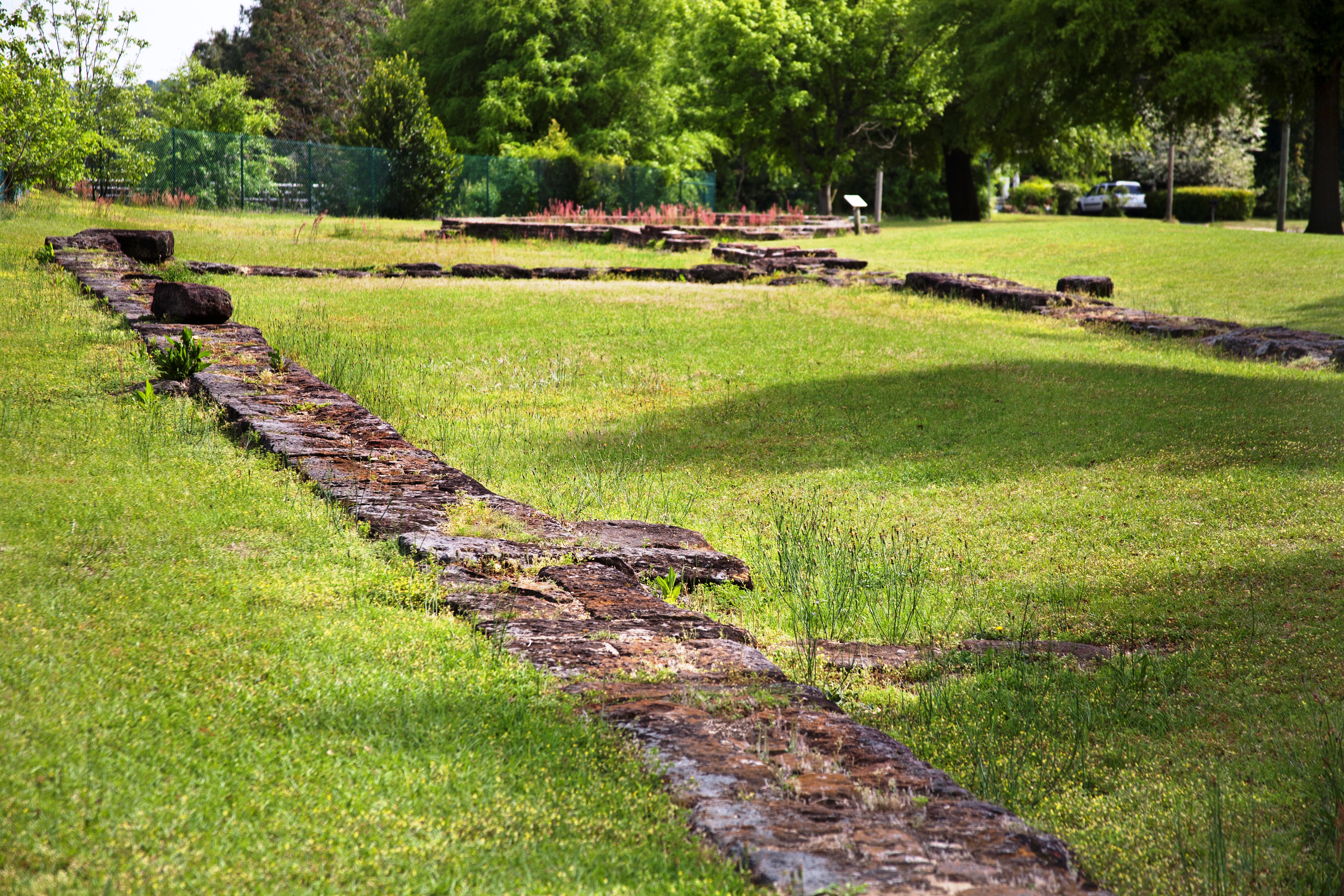
Arsenal Park at Museum of the Cape Fear Historical Complex
A few days later, both armies clashed at the Cumberland/Harnett county line in what became known as the Battle of Averasboro. You can learn all of Fayetteville’s Civil War story by following the “Civil War Trail."
In 1876, there is mention of an African-American militia company known as "The Fayetteville Rifle Guards (Colored)." Another was known as the "Howard Light Infantry." African-American soldiers served in the Spanish-American War, and hundreds became Doughboys in World War I. Fayetteville native, Walter Richardson (African-American) was awarded the Distinguished Service Cross for bravery in the trenches of France in 1918.
With the United States' entry into World War I, Camp Bragg was established. Crude buildings were quickly erected to house the soldiers who came to be trained as artillerymen. On September 30, 1922, Camp Bragg became Fort Bragg (named for NC native, Braxton Bragg)[1], and its size made it ideal for testing long-range artillery weapons. In 1938, the U.S. government built the Veterans Medical Center (VA Hospital), which has served veterans of conflicts back to World War I. A state veterans home and an official military cemetery are located in the area.
It was World War II, however, that often made Fort Bragg and Fayetteville synonymous. The large influx of soldiers created a growth spurt that strained the town’s infrastructure. In 1942, the burgeoning airborne element of the Army relocated to Fort Bragg from Fort Benning, Georgia. The post has been "Home of the Airborne" ever since.
Fort Bragg was also one of the largest points of deployment for hundreds of thousands of soldiers during the Vietnam War. As a result of these wars, Fayetteville boasted one of the highest concentrations of veterans (especially Vietnam Veterans) in the United States.
Before the Air Force, the Army operated airfields. One such field was established next to Camp Bragg in September 1918. It was originally referred to as "the flying field at Camp Bragg." In March 1919, it became Pope Army Airfield in honor of 1st Lt. Harley Pope, who had died when his plane crashed into the Cape Fear River. Co-pilot Sergeant Walter W. Fleming also died in that crash.
When the U.S. Air Force was established in 1947, Pope Air Field, along with portions of Fort Bragg, became Pope Air Force Base. This changed on March 1, 2011, when Congress enacted the latest Base Realignment and Closure (BRAC) law, and Pope Air Force Base once again became Pope Army Airfield.
Today, Fort Bragg is the world’s largest airborne facility, with more than 50,000 military personnel. In addition, in 2011, the Army Forces Command, FORSCOM, moved from its location in Georgia to its new home at Fort Bragg. FORSCOM consists of 750,000 personnel and is the largest United States Army command.
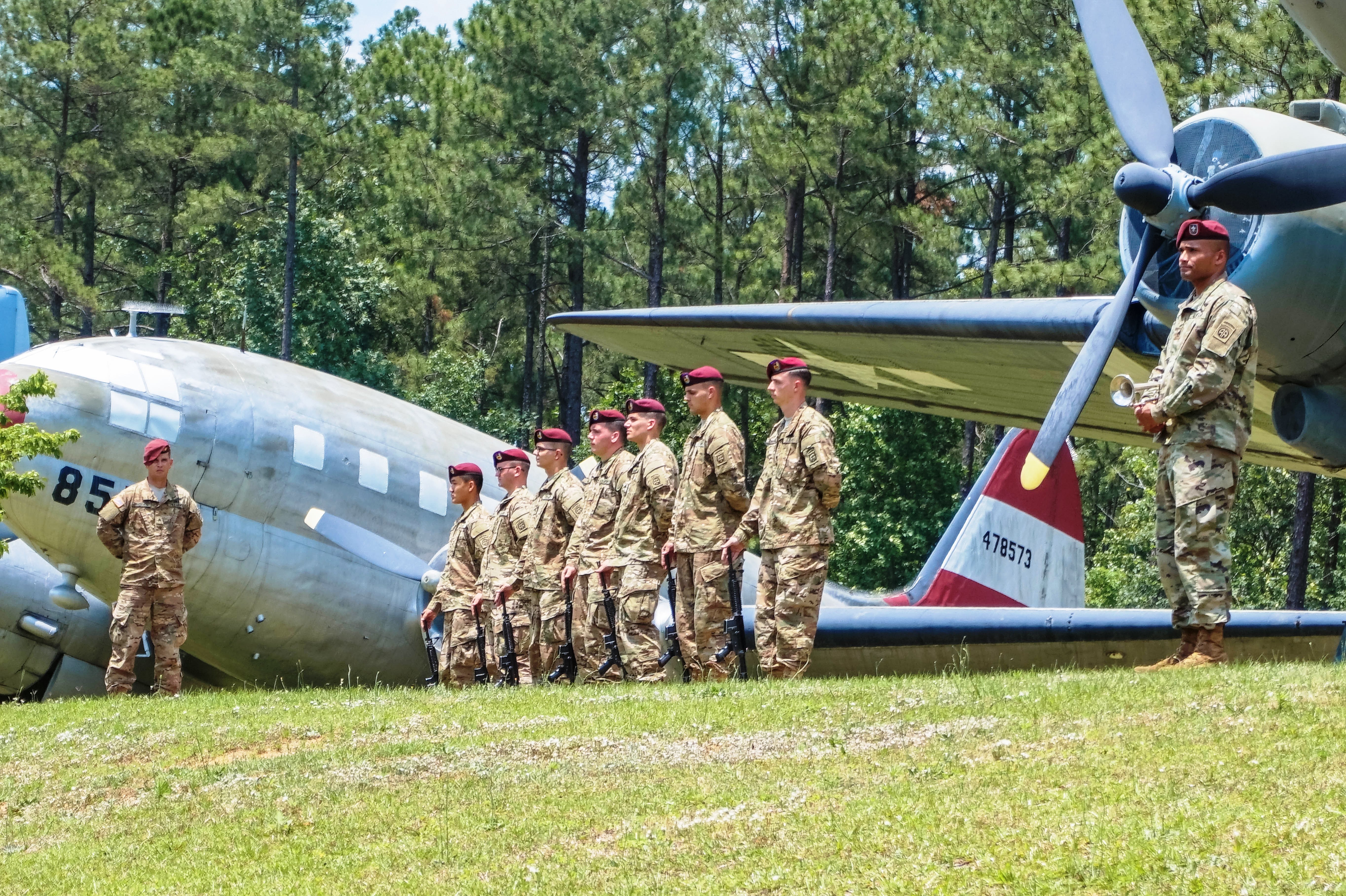
Air Park at 82nd Airborne Division War Memorial Museum
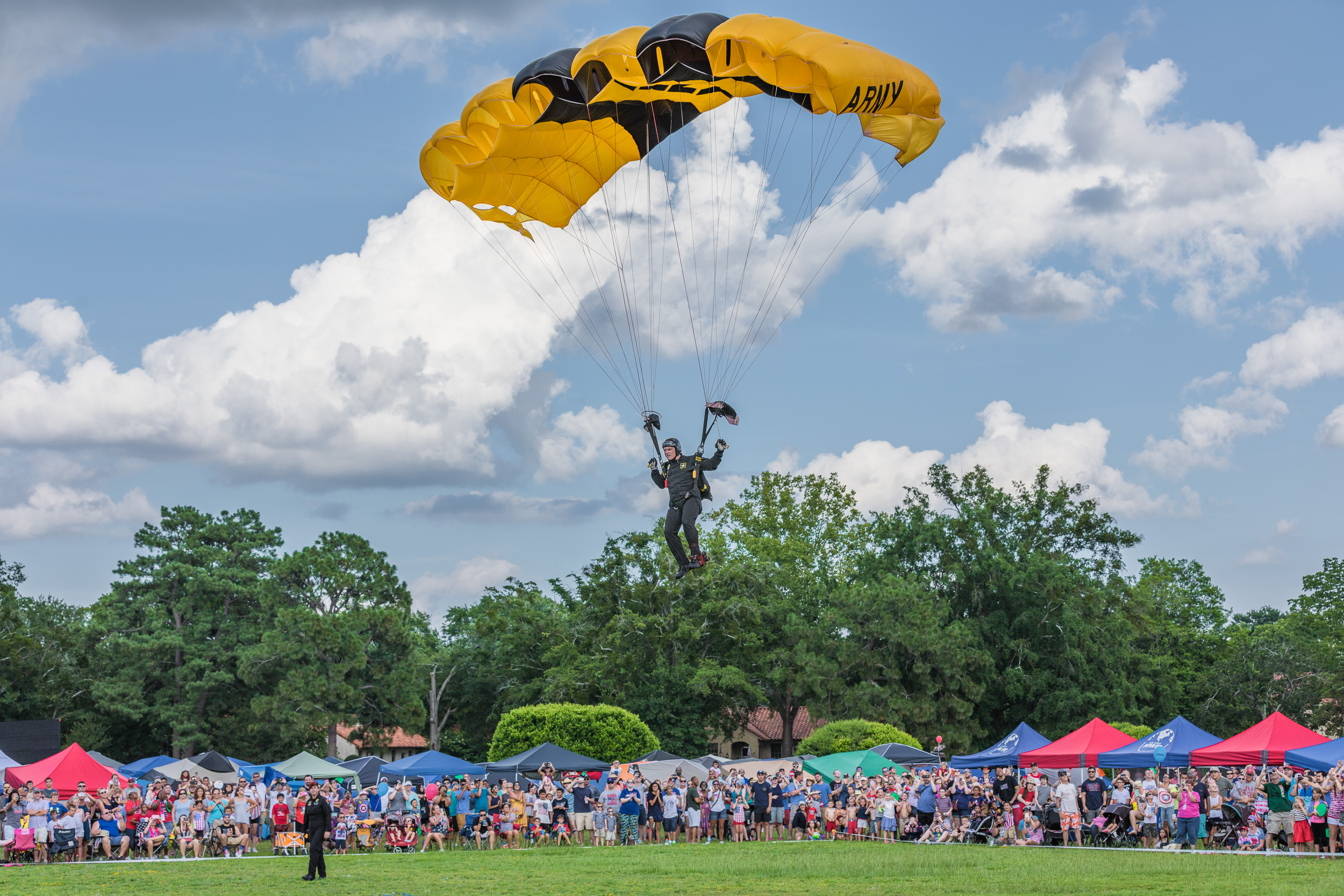
Fort Bragg Main Post Parade Field
The military heritage of Fayetteville and Fort Bragg is told in museums and outdoor displays throughout the county. At Fort Bragg, post museums are dedicated to the history of the 82nd Airborne Division and the Green Berets. An airplane park at Pope displays aircraft from the base’s many missions. In downtown Fayetteville, the world-class Airborne and Special Operations Museum features displays from World War II through the fighting in Iraq and Afghanistan. The FILI Museum displays uniforms and weapons going back to the Revolutionary War (the FILI Museum does not maintain regular operating hours). The Museum of the Cape Fear, while a regional history museum, houses military exhibits and is home to the remains of the United States Arsenal.
[1] Braxton Bragg was born in Warrenton, NC, on 22 March 1817. He was an artillery commander during the Mexican War, in which he served with distinction. However, as commanding general of the Army of Tennessee for the Confederacy, he was heavily criticized and removed from command. He lacked the qualities essential for leadership, and he was never able to win the loyalty and trust of his subordinates.
Join Our Email List
Sign up for our emails to get the latest news, personalized trip ideas, and special offers that fit your interests!
